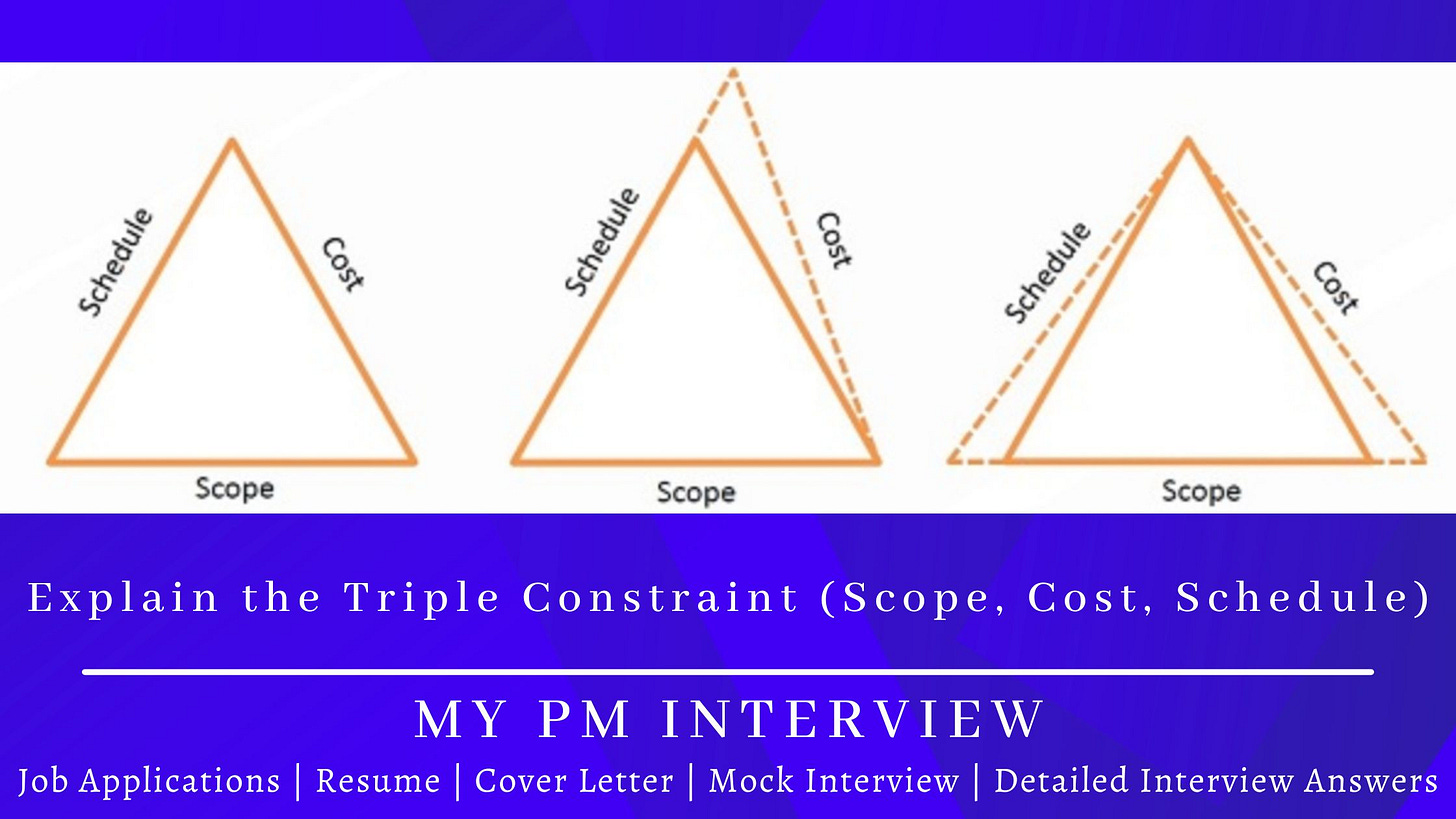Explain the Triple Constraint (Scope, Cost, Schedule) - Google Project Mgmt
Google Project Management Interview Question and Answers - Explain the triple constraint (scope, cost, schedule)
The triple constraint — scope, cost, and schedule — are the three primary dimensions a project manager must balance. Change any one of them and at least one of the others is affected. Successful delivery means setting a clear baseline for all three, continuously measuring performance against those baselines, and making timely, informed trade-offs when realities diverge from plan.
What each dimension means?
Scope: The work required to deliver the project’s agreed outcomes — features, functionality, deliverables, and acceptance criteria.
Schedule: The timeline for completing that work — milestones, deadlines, dependencies, and critical path.
Cost: The financial resources required — labor, materials, vendor fees, contingency, and overhead.
Each has a baseline: a documented Scope Baseline, Schedule Baseline, and Cost Baseline. Those baselines are how we measure performance and decide on corrective actions.
How they interact?
They’re linked by cause-and-effect:
Increasing scope normally increases cost and/or schedule.
Reducing schedule (faster delivery) usually increases cost (overtime, more resources) or forces scope reduction.
Cutting cost tends to reduce resource availability and can stretch schedule or reduce scope/quality.
So the real job of a PM is not just tracking each — it’s managing the trade-offs and ensuring stakeholders understand the impacts of choices.
How I manage the triple constraint?
1. Baseline early and get sponsor buy-in
I make sure scope, schedule, and cost are formally baselined and signed off (charter → integrated plan). Baselines make scope creep visible and make decisions traceable.
2. Use a small set of high-signal metrics
Earned Value Management (EVM) when appropriate:
PV (Planned Value), EV (Earned Value), AC (Actual Cost)
CPI = EV / AC (cost efficiency)
SPI = EV / PV (schedule efficiency)
EAC = BAC / CPI (forecast)
For Agile contexts, use velocity, sprint burn-down, and forecasted sprints-to-complete.
These metrics let me quantify deviation instead of relying on intuition.


